Awesome Rugged Scenery
Red Rock Canyon National Conservation Area is a stunning nature preserve based in the Mojave Desert that gives you plenty of opportunities to let out your inner adventurer
The park is located about 24 km (15 miles) away from Las Vegas in Nevada. So if you are visiting Las Vegas you definitely have to schedule time to go to Red Rock Canyon in one way or the other. You can join a tour and go off-roading, go horseback riding or hire a vehicle and explore the area on your own. Anyway you do it, it will be awesome.
National Conservation Areas are a part of the National Conservation System which is overseen by the Bureau of Land Management. There are 16 National Conservation Areas in the United States and as these areas have been designated for conservation, they are ensured to be protected for future generations similar to national parks and wildlife refuges.
Geology: Creation of the Amazing Rock Formations
More than 500 million years ago Red Rock Canyon was at the bottom of the sea. At the time, mostly limestone and dolomite accumulated over 250 million years during the Paleozoic Era. The limestone, as of now, contain fossils of the sea life that flourished at the time. Towering grey Paleozoic limestone is exposed at the LaMadre Mountain visible from the Scenic Drive.
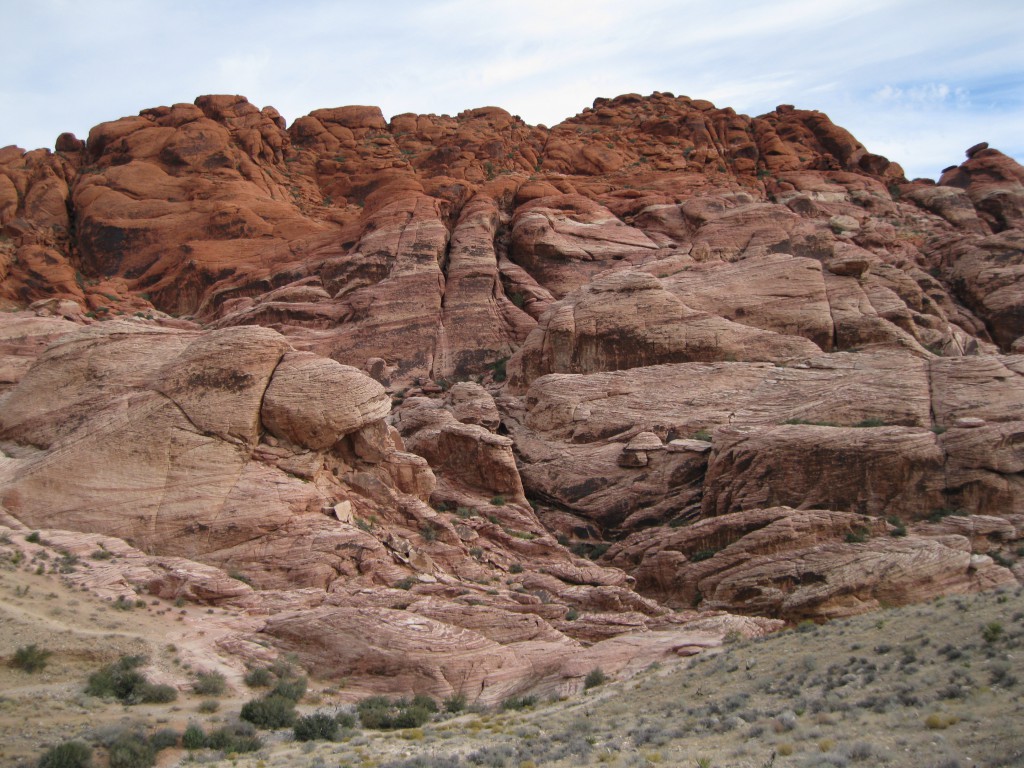
Water and wind shifted sands back and forth and formed the angled lines known as cross-bedding. Over time this was compressed into Aztec Sandstone during the Jurassic Era. These formations about 180 to 190 million years old and are fossilised sand dunes.
The iron in the sand is oxidised which created the swirls and curls of colour in the rock formations. The red colour is due to the iron content and is rusting rock. A whole cliff of sandstone can actually turn red by less than one part per million of iron oxide. The tan coloured rocks are either places where iron oxide has never been deposited or where the iron has been leached out by the subsurface.
As you face the escarpment of the limestone you will notice that it is a based on top of the younger tan and red Jurassic sandstone. This is a consequence of the Keystone Thrust Fault. At the end of the Mesozoic Era about 65 million years ago, the oceanic plate began moving beneath the North American Plate.
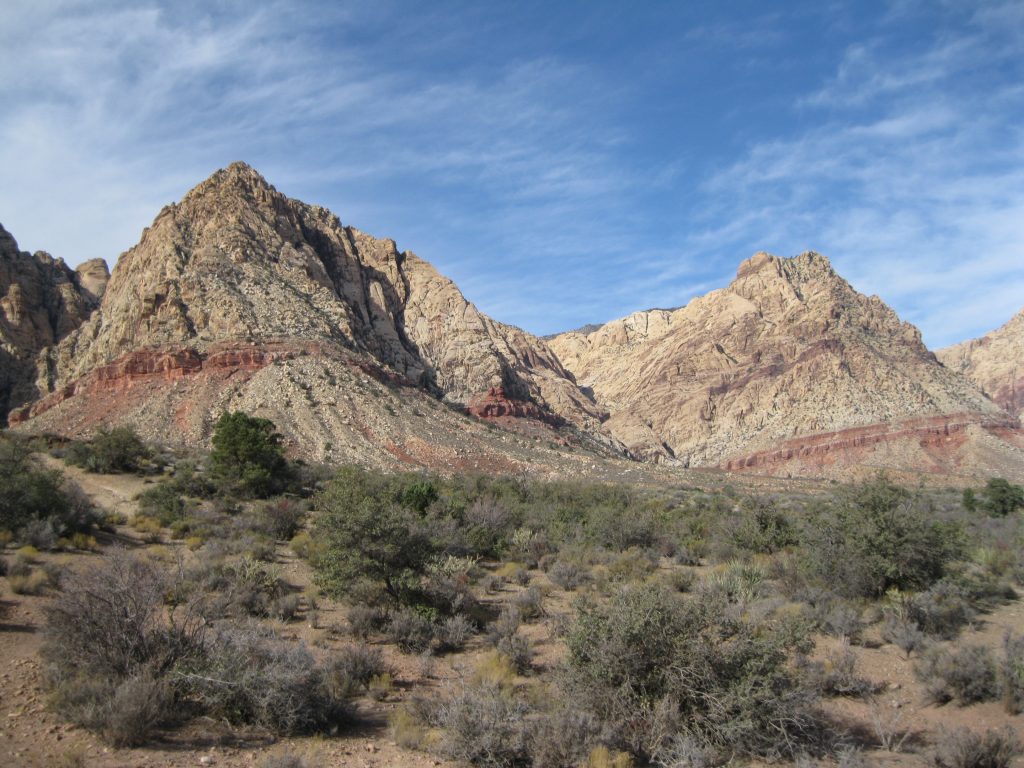
This caused intrusion of Sierra Nevada granite batholith which set up compressional forces in the Earth’s crust that made older limestone thrust up and over the younger sandstone. The limestone would protect the weaker sandstone from erosion for millions of years and then eroded back to its current location. The compressional trust faulting at the end of the Mesozoic Era can be traced all the way up to Canada but the best exposure is at Red Rock Canyon which is pretty awesome.
Tracks of small two-footed meat-eating dinosaurs have been found in the Aztec sandstone in three places. Small tracks of early mammals and spider and scorpions have also been found.
The Vegetation & the Wildlife
There is plenty of interesting vegetation in the park such as the agave plant, yucca plant, the prickly pear cactus and the occasional Joshua tree.
The Utah agave is a quite fascinating heat tolerant plant. It has so-called toothed leaves to protect itself from other animals and plants trying to steal its water and nutrients. Around 7 to 10 years into the life of the agave it will shoot up a 3.7 metres (12 ft) tall stalk to display a beautiful yellow flower. The flower will turn into seeds after pollination from hummingbirds. The plant will then die off and spend all its energy reproducing.
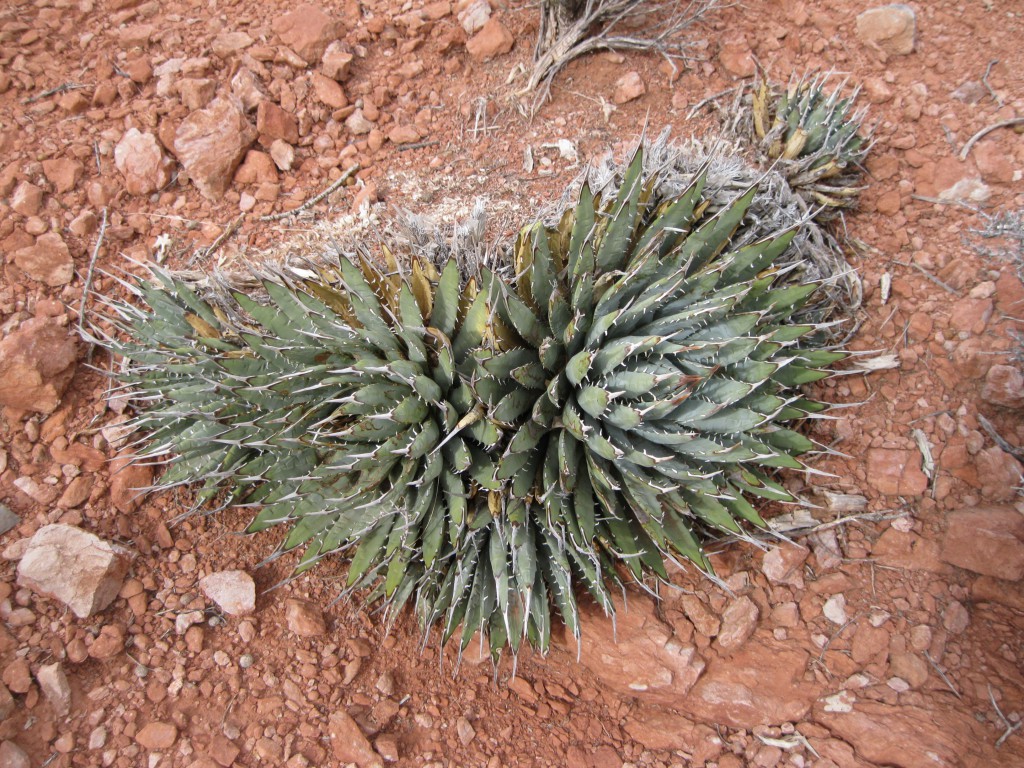
The wildlife of the park is quite abundant with different lizards, toads, snakes and birds. You may be lucky and spot some wild burros as you make your way through the park as they may stroll around the roads at times. A burro is a small donkey and are really cute.
Exploring the Park
Red Rock Canyon National Conservation Area is such a great place to explore especially if you are staying in Las Vegas for several days. Las Vegas is an absolutely awesome town with such a big variety to cool things to do. It’s a busy and happening town, so going to Red Rock Canyon to get into the fresh air just adds a bit more spice to your experience. Either you want to be fast and adventurous by doing some off-roading or you may want to take the more chilled approach by exploring the scenery at a slower pace by car. You could also get into the wilderness by hiking or horseback riding which is cool as well.
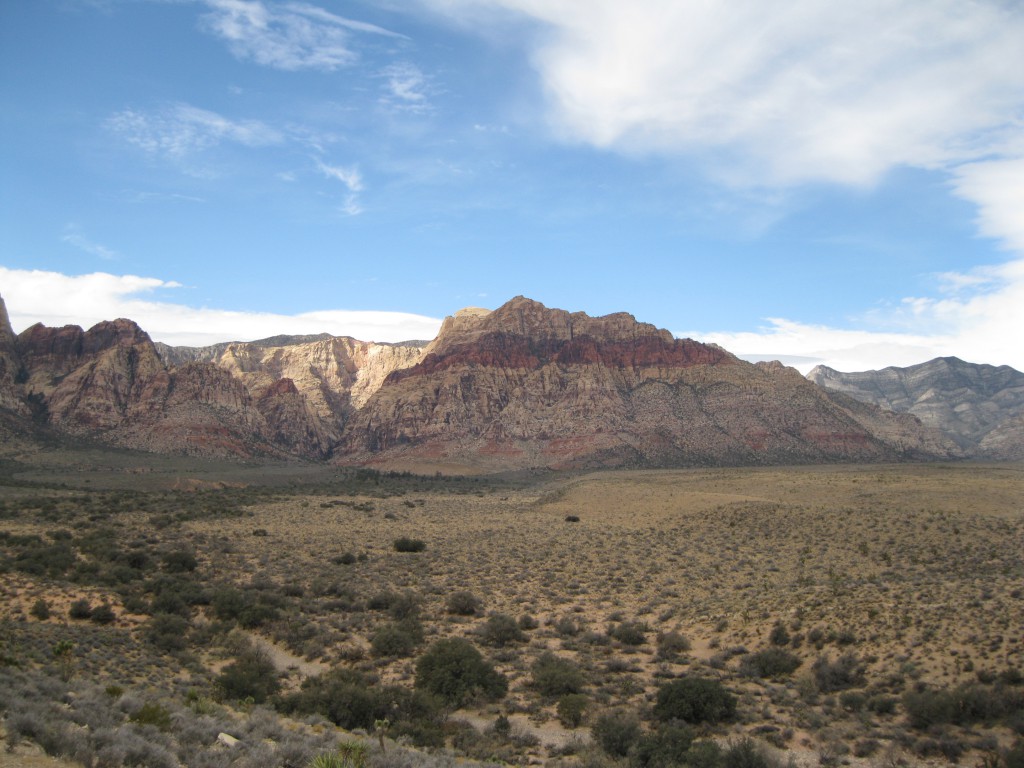
Bear in mind when going to Red Rock Canyon it will be a fair bit colder than in Las Vegas. Therefore bring some warm clothes such as a jumper and a beanie. It obviously depends on the season of your visit, but bring warm layers just in case at any time of the year. It will be significantly colder than Las Vegas in any case.
The Visitors’ Center
The Visitors’ Center will be one of the first points of interest as you head into the park. It is located on the Scenic Drive, has some interesting exhibits and information about the canyon and interactive learning experience facilities. It also has great vantage points where you can take photos. The names of the mountains and peaks are displayed at the lookouts.
Exploring by Foot
The park has nineteen marked trails that will give you plenty of opportunities for great day hikes. Most of the trails are found along the Scenic Drive.
Calico Hills is the most popular spot for hiking. The trail runs along the base of the Calico Rocks from Calico Basin to Sandstone Quarry. The trails at Calico Hills I & II are short and rated from easy to moderate. They will take you closer to the Aztec sandstone and vary from 3.2 to 9.7 km (2 to 6 miles) with an elevation of 122 metres (400 ft). Rock climbers can be seen in the area.
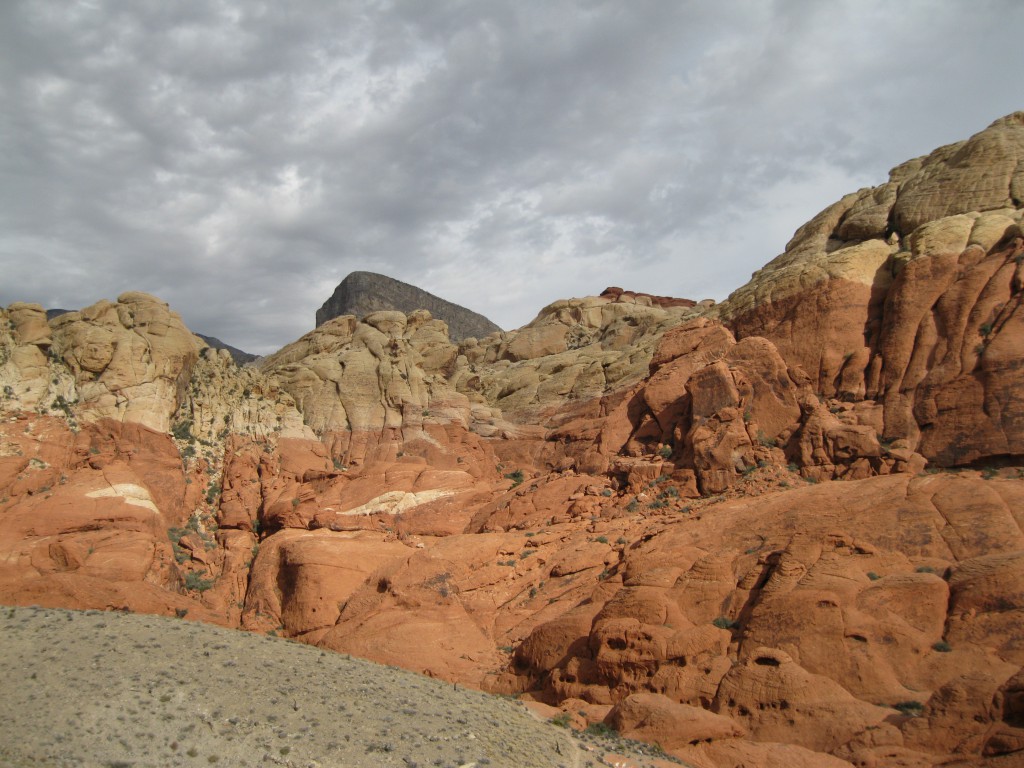
The hike to Turtlehead Peak is more strenuous. It’s not an easy climb but is one of the more accessible peaks. The trail begins at Sandstone Quarry and is 8 km (5 miles) long.
Pine Creek Canyon is another option where you will find ponderosa pines growing which are rare at that altitude but it is made possible by the mountain shade and water in the area. It’s a moderate 4.8 km (3 miles) hike which will take you from the desert to the microclimate of the pines in the canyon.
Exploring the Scenic Drive and the Rocky Gap Road
You definitely have to head down the Scenic Drive which a 20.8 km (13 mile) loop. There is a fee station at the entrance which you don’t have to worry about is you are on an organised tour. Along the way you will find plenty of scenic pull-offs and if you are driving by yourself you can check it all out at your own leisure.

It is highly recommended that you have a stop at Calico I and check out the wonderful scenery of Calico Hills. The view of the contrasting tan and red coloured sandstone rock formations towering in front of you is just staggering. If you look closely to the hills you make spot rock climbers on the rock walls. From the stance of Calico I they will be tiny that they can be very had to see. At Calico I you will find interesting information displayed on the geology of the park. Continue down to the following stop at Calico II where you will have yet another awesome view of Calico Hills from a different angle. This is also fantastic spot.
As you head onwards you will get to a vantage point called High Point Lookout. Stop here and have a good look around. The view of the park and the surrounding massive mountain peaks is just magnificent. Take you time to enjoy the scenery and take some photos.
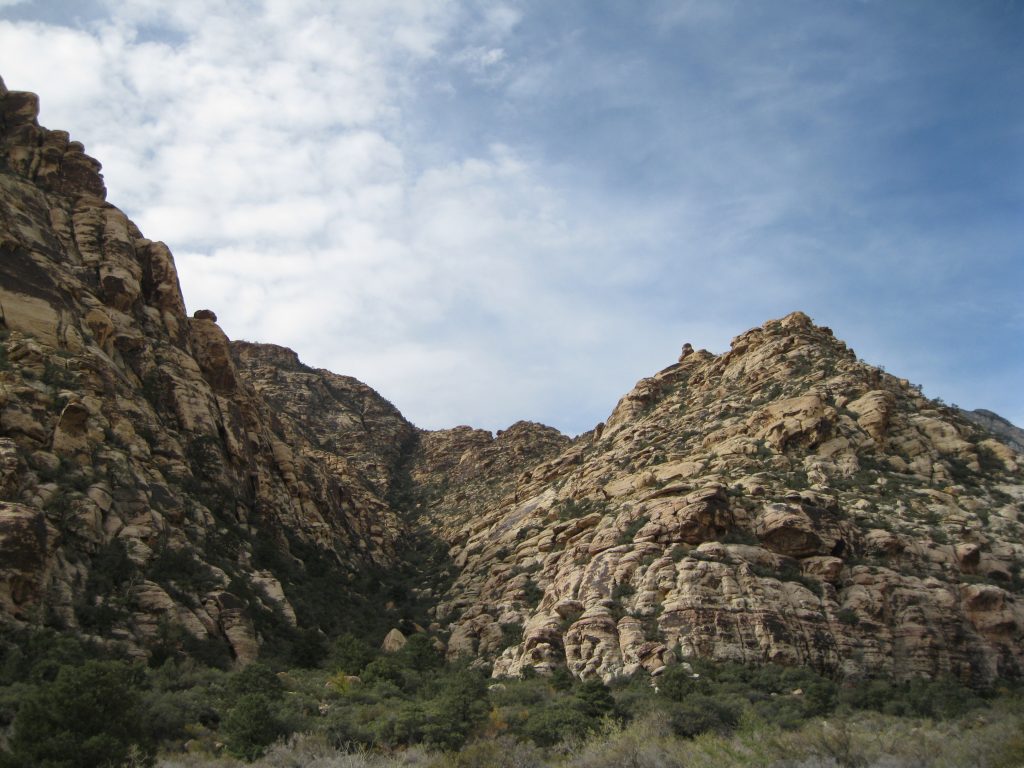
If you are driving an appropriate vehicle for off-roading, such as a jeep wrangler, then you should head down Rocky Gap Road. This is such a cool experience. You get to ride up a rugged road and see the rock formations up close. It’s an exciting way of taking in the landscape where you will come in contact with the rough terrain and great rock walls. Furthermore you will get opportunities to take some neat shots as well. Rocky Gap Road, which is an old pioneer wagon trail, is a great place to go off-roading. The whole road is 14.2 km (8.9 miles) long. It is a bit of a bumpy ride in the beginning but gets even more rugged the further up the road you get.
Some of the road is in the La Madre Mountains Wilderness Area which is a great spot of the park. La Madre Mountain is the highest peak at 2,485 metres (8,154 ft). It is the largest wilderness area in southern Nevada, provides habit for bighorn sheep and has some interesting archaeological sites such as Indian rock art as well as numerous animals, plants and so on.
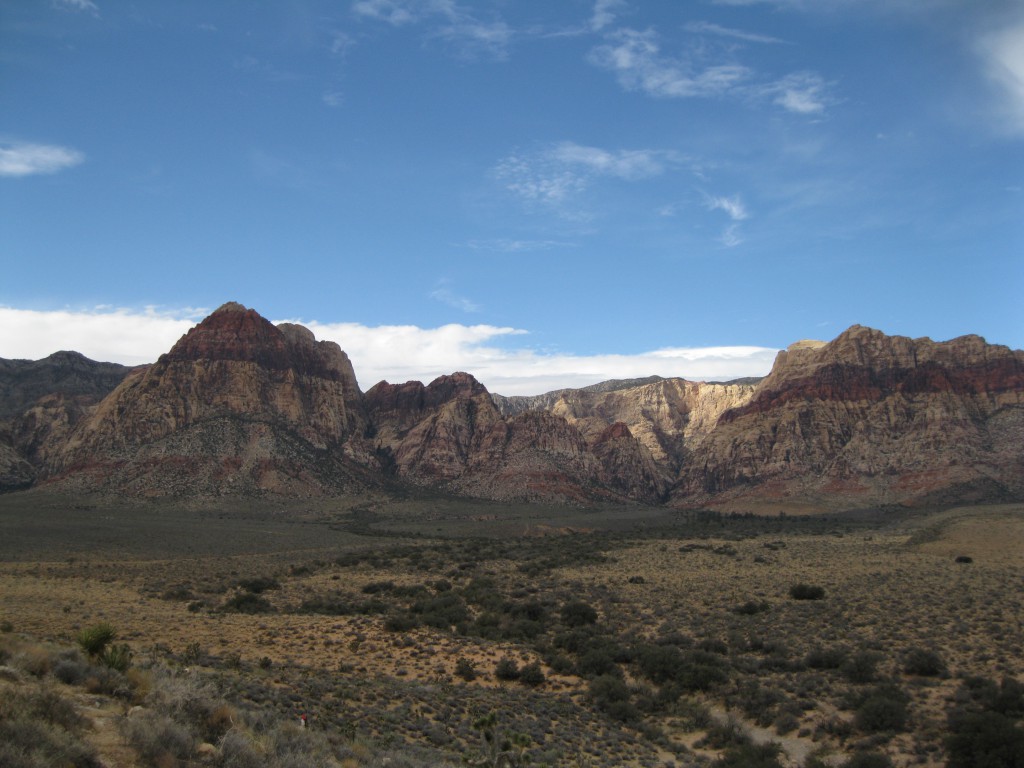
It is recommended that if you head up Rocky Gap Road, you should drive for a couple of kilometres and then return back down to the Scenic Drive. If you go further up the road it will get very challenging and you have to be an experience dirt road driver make you way through this terrain.
As you head back to the Scenic Drive, continue down to Red Rock Wash Overlook where you will have a view of the majestic mountains leading into Ice Box Canyon and Pine Creek Canyon. This is an absolutely stunning view. Note the amazing dark red line on the mountains. Absolutely amazing. Take your to take some shots here. Afterwards you should head further down the loop make stops if you want when it fits you and when you reach the end head back to Las Vegas or where ever you are going on your journey.
The Agave Roasting Place & Native Art Work
On the way up Rocky Gap Road there is an amazing point of interest where you should have a stop. This is where you will find the agave roasting place and some awesome rock art, known as petroglyphs and pictograph, by the Native Americans who lived here in the day
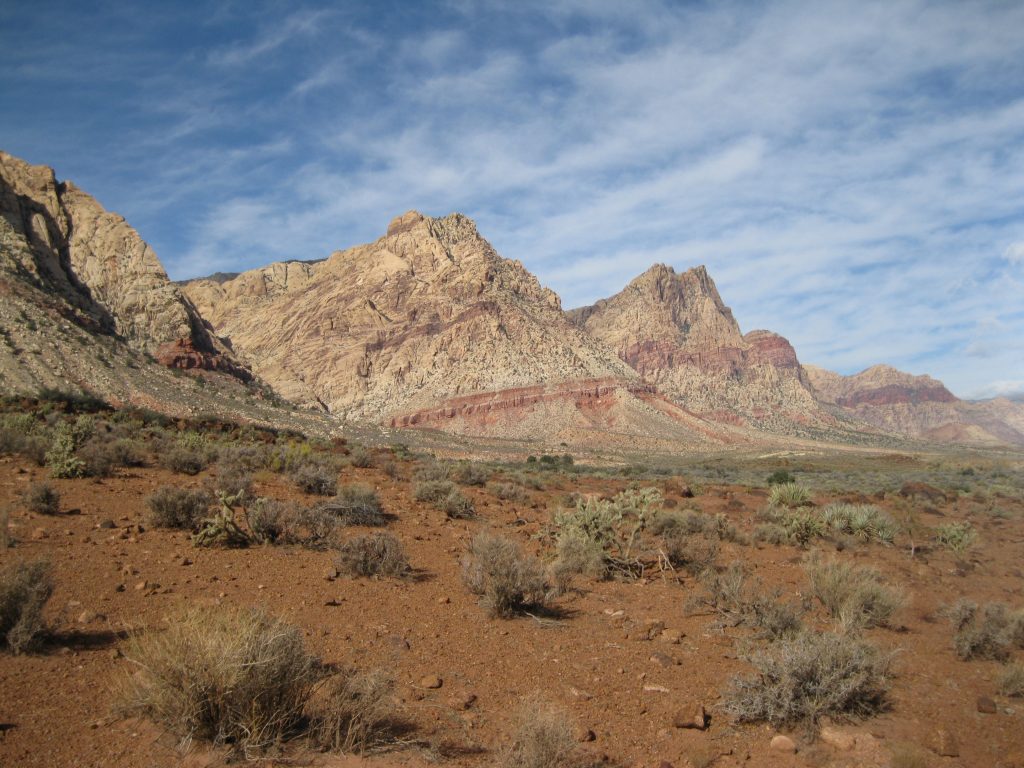
The agave roasting place had a special meaning for the Native Americans. They were used for hundreds of years by the Southern Paiute and Mojave Indians where they prepared food supplies and gathered for ceremonial dancing, storytelling and religious ceremonies.
When the agave plant was roasted it could either be eaten immediately or dried for later consumption during winter. When the single tall flowering stalk of the agave plant was beginning to grow it was most nutritious, tasty and ready to be harvested and roasted. After roasting it has a similar taste to steamed asparagus.
Limestone rocks were placed in a pit and heated by fire when the doing the roast. The food was placed on top of the rocks and then covered by more hot rock, coals and earth. This was left to cook slowly for hours or days.
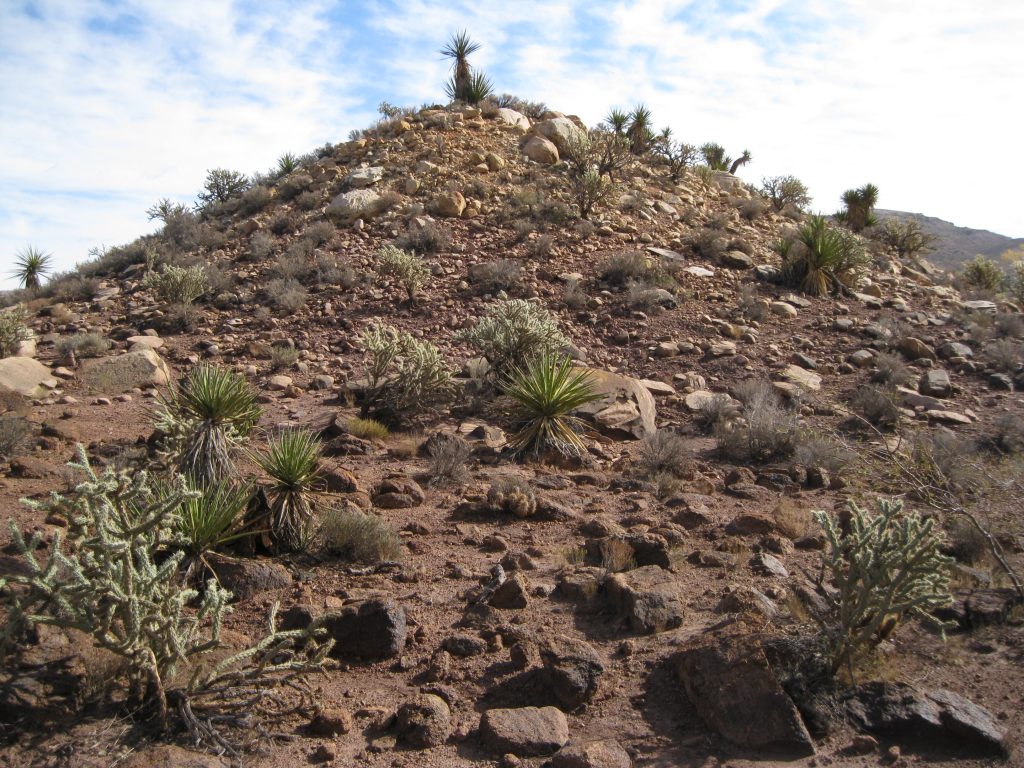
The rock art is some of the earliest form of human expressions found in the area and it gives an insight into how the Native Americans experienced their surroundings. The rock paintings are known as pictographs and the rock carvings are knowns as petroglyphs. They both display images of humans, animals and plants and also abstract designs in the form of spirals, circles, stars and dots. We do not know the meaning of the art work but it is thought to represent hunting rituals, water sources, migrations, astronomical events and religious practices.
At this site you will see some amazing red hand prints. The native people may have created these pictographs by coating their hands in red paint and pressing them against the surface on the rock wall. The paint was made by a mixture of minerals, clays or charcoal with a liquid binder such as plant juices, saliva or egg whites. The red colour of the handprints came from iron oxide.
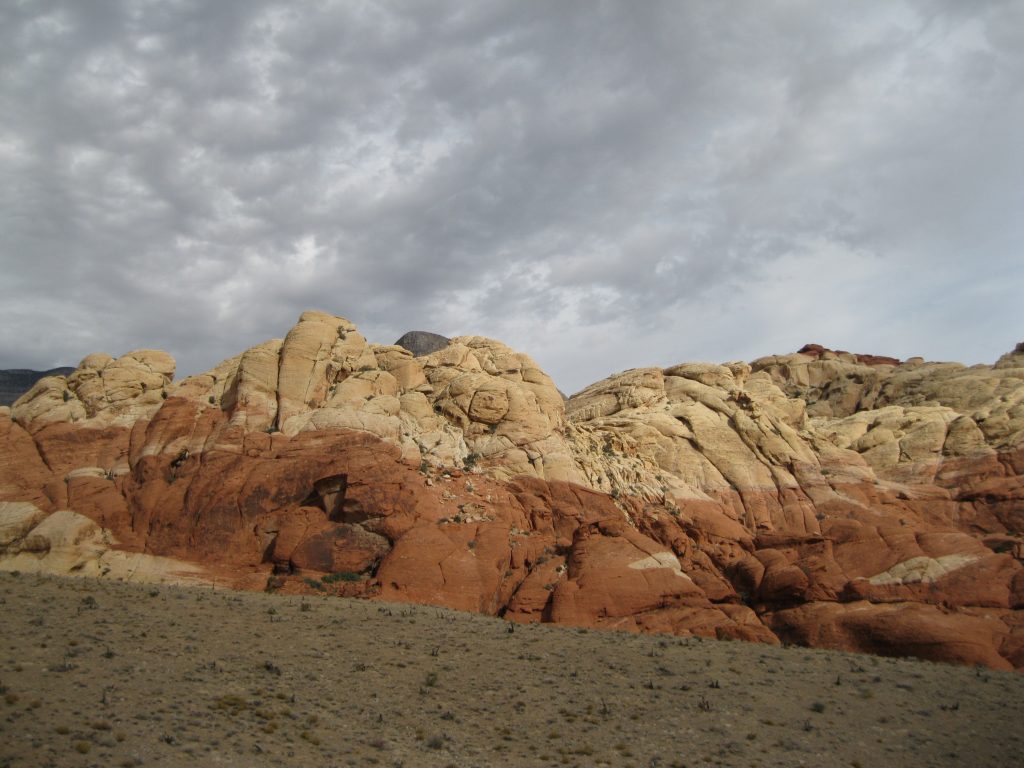
The earliest known rock art in the American southwest was made by hunter-gatherer Indians several thousand years ago who decorated canyon walls, rock shelters and boulders. In Red Rock Canyon the Southern Paiute, Mojave Indians and early explorers and settlers continued to carry on the tradition.
Exploring by Horseback
Going horseback riding is an awesome way of seeing Red Rock Canyon. There are different options. Bonnie Springs Ranch offers different rides which can be done via a tour operator. They have rides combined with breakfast, lunch or at sunset. You will ride along the Old Spanish Trail which is so cool. The horse will be walking along at a moderate pace so this is for people of all ages. It is so easy and such a joy.
In the case of the breakfast ride, if you have joined a tour from Las Vegas, you will leave your place of accommodation early in the morning in order for you to be at Bonnie Springs in time for breakfast. Upon arrival you will get your breakfast of choice which is good full meal served in a cosy saloon setting like in the old west.
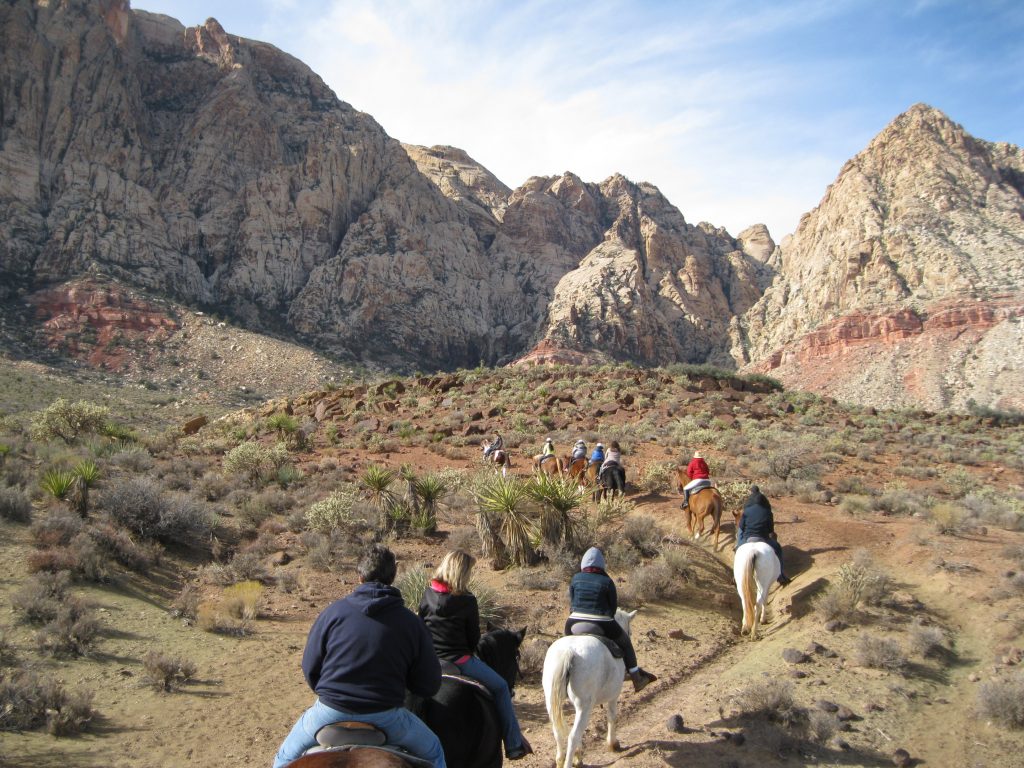
After breakfast it’s time to hit the stables and find a horse that fits you. This really depends on whether it is for a child, an adult and how tall you are. The horse is picked for you by the staff at Bonnie Springs. You then have to decide if you want to wear a helmet and then get ready. Some people may be concerned about getting a sore backside if they are not used to riding a horse but this is not a problem. The saddles are really comfy and you will not be sore afterwards at all.
The tour will be guided, with a guide in the front and one in the back. It is recommended that you keep your camera out and handy because when you are riding along you want to concentrate on steering and handling the horse and not fumble around after your camera. Still you don’t have to steer that much really as the horse knows exactly what it’s doing and where it’s going. You just have to be sure it doesn’t eat any of the vegetation along the way. So if you’re standing still you have to pull the horse’s head back if it’s going for a snack.
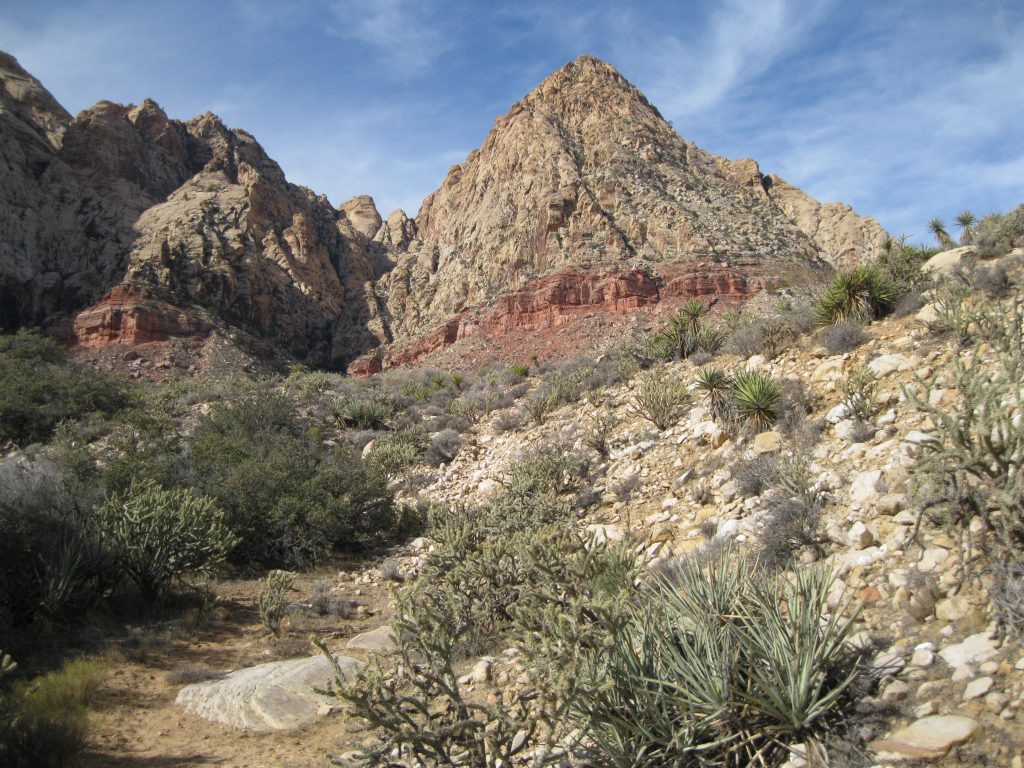
It is such a joy getting into the nature and experiencing this wonderful part of the country on a horseback. Very different to hiking or biking which are also cool option but this is so awesome for a change and especially if you haven’t tried riding a horse before or rarely do so.
The ride is on pretty easy level terrain with a couple of hilltops here and there. The tour on the horseback is for about an hour in total which is perfect. You will get to a point on the trail about half way which is perfect for a photo of you on the horse. The guide will take a photo of you on the horse doing a cowboy pose. Good stuff.
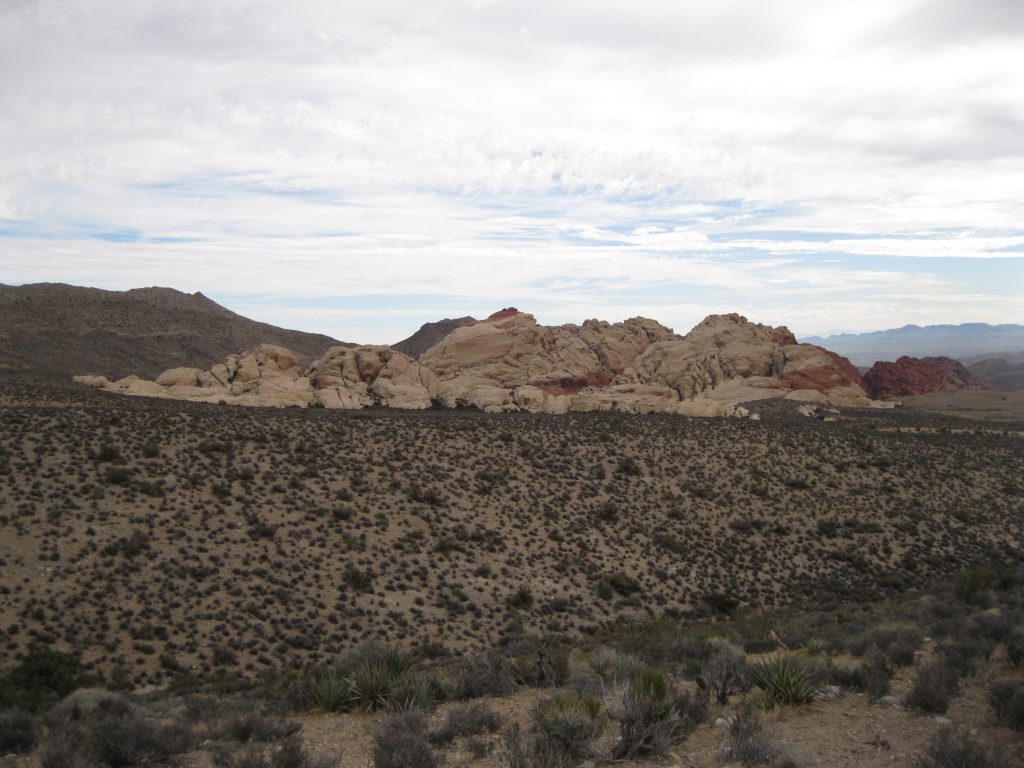
As you ride, just chill out and take in the amazing scenery. Make sure you take some shots along the way as the landscape will change the further you ride. When the ride terminates you will return to the stables where you started and say goodbye to your horse which can be a bit hard after a good time it’s given you on the trail. You will then be transferred back to you hotel in Las Vegas.
Bonnie Springs Ranch
Bonnie Springs Ranch is located right in the heart of the park. It was originally built in 1843 as a stopover for wagon trains going on the Old Spanish Trail to California. It wasn’t until 1952 under the provision of Bonnie McGaugh and Al Levinson that the ranch underwent substantial renovation and became a tourist attraction in 1958.
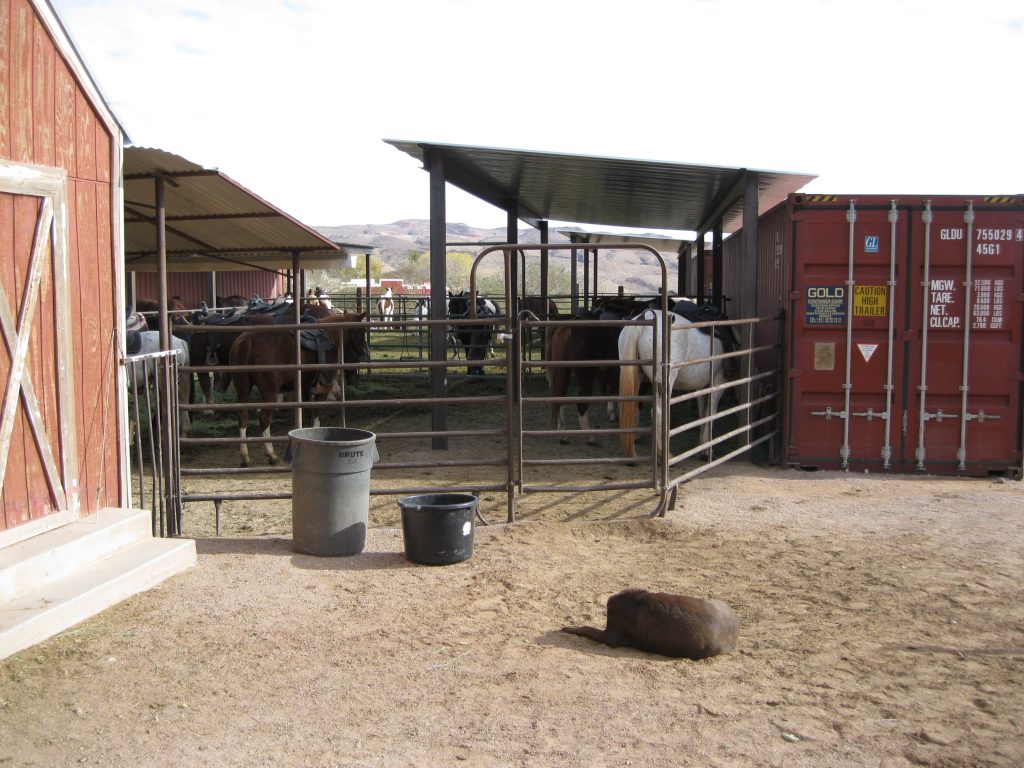
Stables, a petting zoo and a restaurant following shortly after and then a reconstruction of the Old Town as design of the 1880 mining community. This opened in 1974 along with a saloon, shops among other things and daily reenactments in honour of the Old West.
